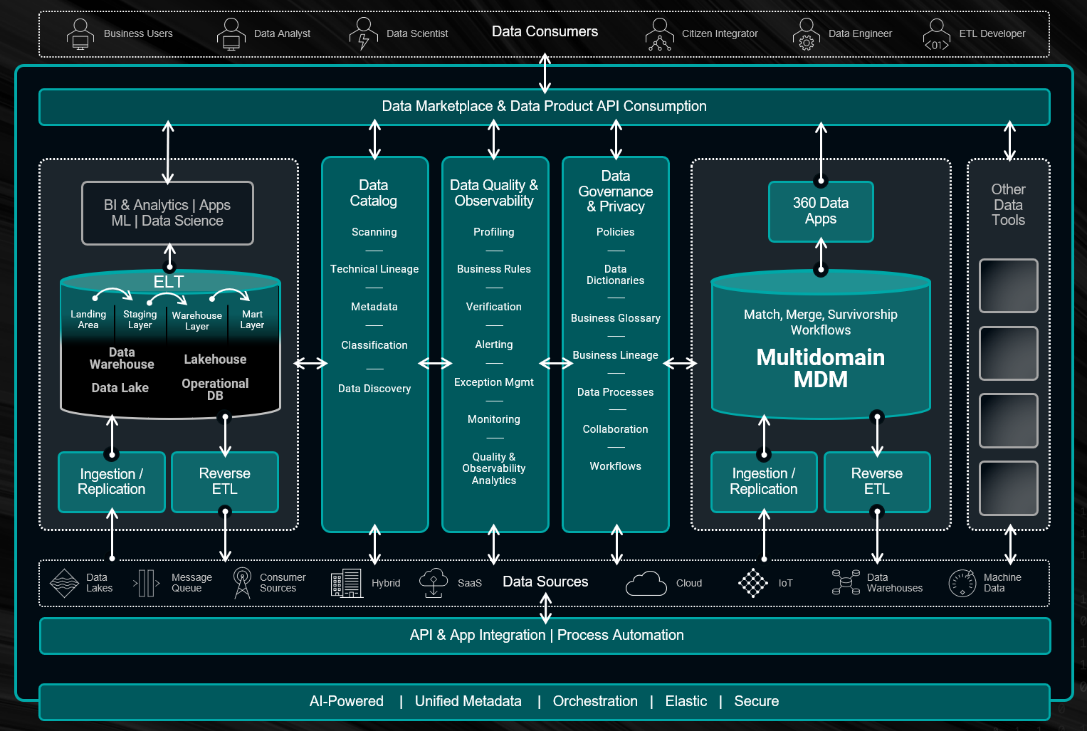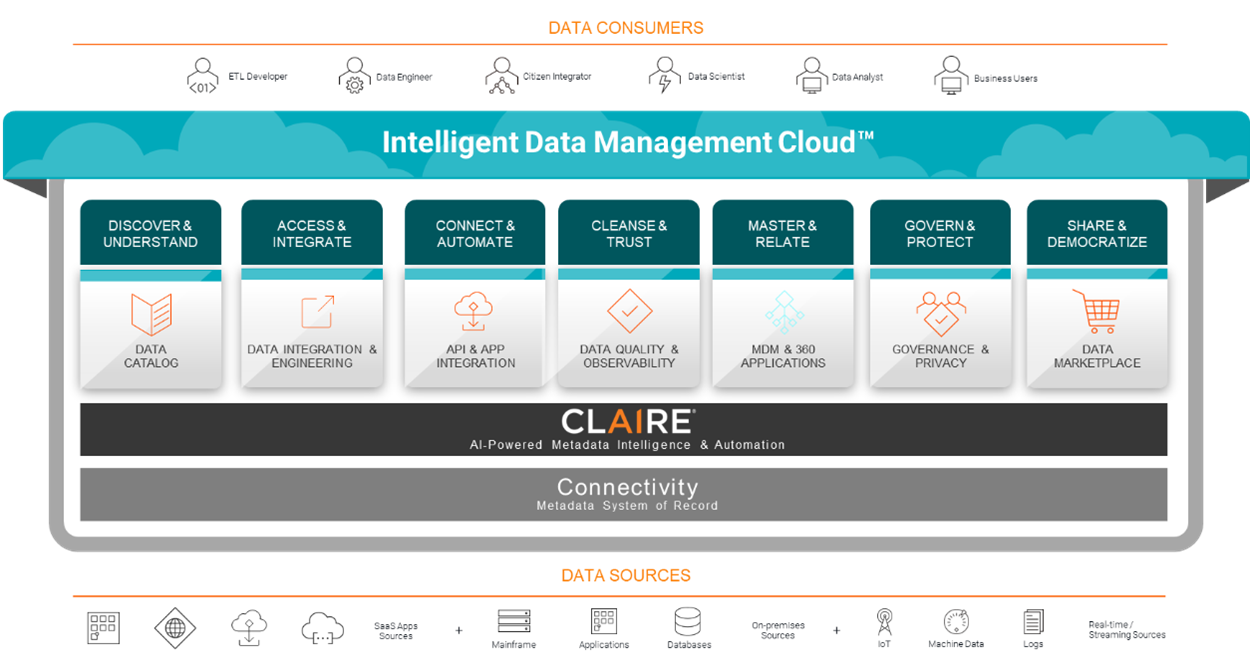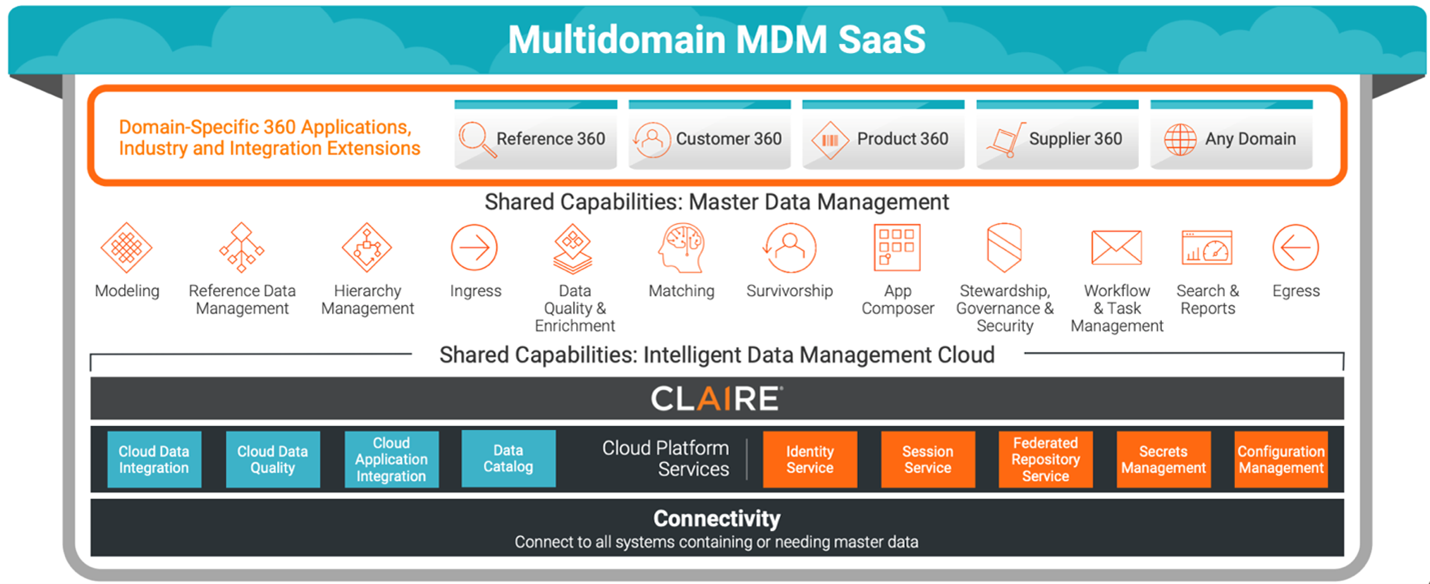How a Modern Data Architecture Brings AI to Life: Data Mastering for AI
In a rapidly evolving digital landscape, the transformative potential of artificial intelligence (AI) has captured the attention of companies worldwide. As we stand at the precipice of a new technological era, businesses are not merely dipping their toes into the waters of AI; they are diving headfirst into an ocean of possibilities by making significant investments in AI. It is no longer a mere concept but a tangible force with the potential to reshape the very essence of businesses.
The AI Gold Rush: Companies Betting Big on Artificial Intelligence
While predictive AI has long been transforming business outcomes for many organizations by simplifying a variety of use cases, the advent of generative AI (genAI) has opened up possibilities like never before. According to a survey by McKinsey, 40% of organizations will invest more in AI overall because of advances in generative AI (gen AI).1 While AI used to be complex for general users, gen AI is democratizing AI by providing users with a natural language interface to interact with data. No wonder AI adoption is rising across industries, especially the knowledge industry. 79% of respondents in the same McKinsey survey shared that they had some exposure to gen AI at work or outside of work, and 22 percent routinely use it in their own work.2 This indicates that the next phase of digital transformation will be data and AI-driven.
That brings us to the challenges staring every organization in the face. Because AI is fueled by data, it is only as good as the data it uses. To achieve success with AI, your data needs to be holistic, high quality, governed and democratized. But the harsh reality is that bespoke solutions trying to hold a data architecture together are not primed to manage your data in a way that makes AI initiatives successful. In this blog, we will explore the critical relationship between the success of AI and modern data architectures with a deeper look at the pivotal role that data mastering plays in this dynamic landscape.
Why You Need a Modern Data Architecture for Successful AI
Most organizations struggle with highly fragmented data that is inaccurate, inconsistent, inaccessible and lacking a governance framework. In short, the data is not mastered. Hence, these data challenges need to be addressed using a data architecture that employs AI itself; is scalable, flexible and modular; and provides accessible, low-code or no-code capabilities to virtually all skill levels.
With AI-powered data management capabilities and best practices at its core, modern data architectures are robust and flexible enough to address what AI needs to make its promise a reality: data.

Figure 2: Several building blocks make up a modern data architecture.
The foundation of a modern data architecture includes data integration, data engineering, data quality, data observability, data catalog, data governance and privacy, API and application integration, data marketplace, data products and data mastering. Let’s zoom into data mastering to understand why it is a crucial piece of the data architecture puzzle.
Why Data Mastering Plays an Important Role in AI
Imagine an organization is using AI for business needs, such as personalized marketing, supply chain optimization, fraud detection or product innovations. However, its data is highly fragmented, duplicated and poor-quality. This means the stakeholders can’t get a well-rounded picture of the data across key data domains, such as customer, product, location and supplier. Moreover, the data for such critical domains lives in different applications in a non-standardized format.
Using data in such a state to train and run AI can be a recipe for disaster. To avoid such inevitable pitfalls, you need data that is mastered. This will provide you with clean and standardized data with a 360-degree view across different domains. When linked with transactional and analytical data, this can enable your AI models to generate insights that inform initiatives targeted at improving business outcomes. Data mastering involves some very important and critical steps that cannot be ignored or circumvented. To master your data, you’ll need to:
- Discover and ingress data from across your different data sources and applications.
- Build a flexible data model that can manage and organize your data domains.
- Profile, cleanse and standardize your data, finding null values and correcting inconsistencies.
- Enrich your master data records using third-party data for a more complete data set.
- Match and merge multiple (and sometimes conflicting) records coming from your different sources and survive the best version of the truth into a single, golden record.
- Manage data relationships and hierarchies across and within your data domains.
- Manage your key reference data, such as code lists, charts of accounts, etc.
- Enable data stewardship capabilities through workflows and govern the mastered data.
- Egress and publish master data so that it is available for analytics and, ultimately, for key AI models.

Figure 3: An MDM architecture for data mastering includes data integration, data quality, MDM, reverse ETL and more.
To achieve all of this at scale, you need to add intelligence and automation to the data mastering process. This calls for AI-based identity resolution, matching and merging, automated data mapping, data quality rule recommendations, dynamic attribute creation and product classifications. These intelligent capabilities improve your overall data accuracy by using more examples to train the machine learning, thus reducing the need for manual intervention, minimizing ambiguity and eliminating inconsistencies.
How Informatica Brings Modern Data Architectures to Life
To implement a modern data architecture that can power your AI initiative to get critical business benefits and stay ahead of your competition, you need a data management solution that is scalable and robust while having the ability to navigate your complex data ecosystem. The Informatica Intelligent Data Management Cloud (IDMC) is the industry’s most comprehensive AI-powered data management cloud, and it has virtually all the key data management capabilities needed to make data-driven organizations successful and support your modern data architecture, including data fabric and/or data mesh.

Figure 4: The Informatica Intelligent Data Management Cloud provides comprehensive AI-powered data management capabilities.
MDM and 360 applications, services of IDMC, are supported by metadata and AI / ML with CLAIRE, our AI engine. These capabilities enable you to automate and provide intelligence through CLAIRE as a copilot. They also include comprehensive domain-specific 360 applications as well as industry and integration extensions that can easily scale to master data for specific business use cases, data sources and industries. With the robust data mastering capabilities of MDM & 360 Applications, in concert with other IDMC services, you can establish a modern data architecture to unlock the true potential of your AI initiatives.

Figure 5: Informatica Multidomain MDM SaaS includes many domain-specific extensions and shared capabilities.
Next Steps
Looking to get more from your data architecture and AI initiatives? There are several places you can start:
- Check out the Modern Data Architecture Center to explore detailed architectures that can enable AI success.
- Watch our AI & Architecture Summit, now available on-demand, and check out the dedicated breakout on Data Mastering for AI at the end.
- Visit our Experience Lounge to explore interactive demos that show AI-driven data management in action.
- Visit our MDM & 360 applications webpage to learn more about how we can help your AI initiatives.
2Ibid.








